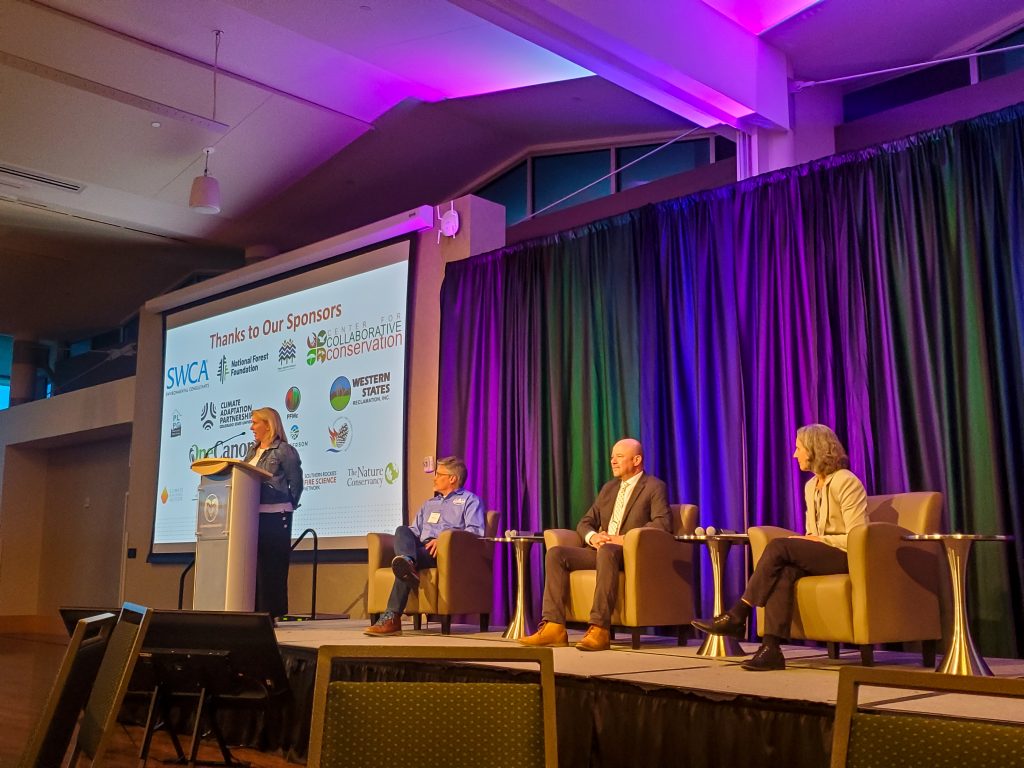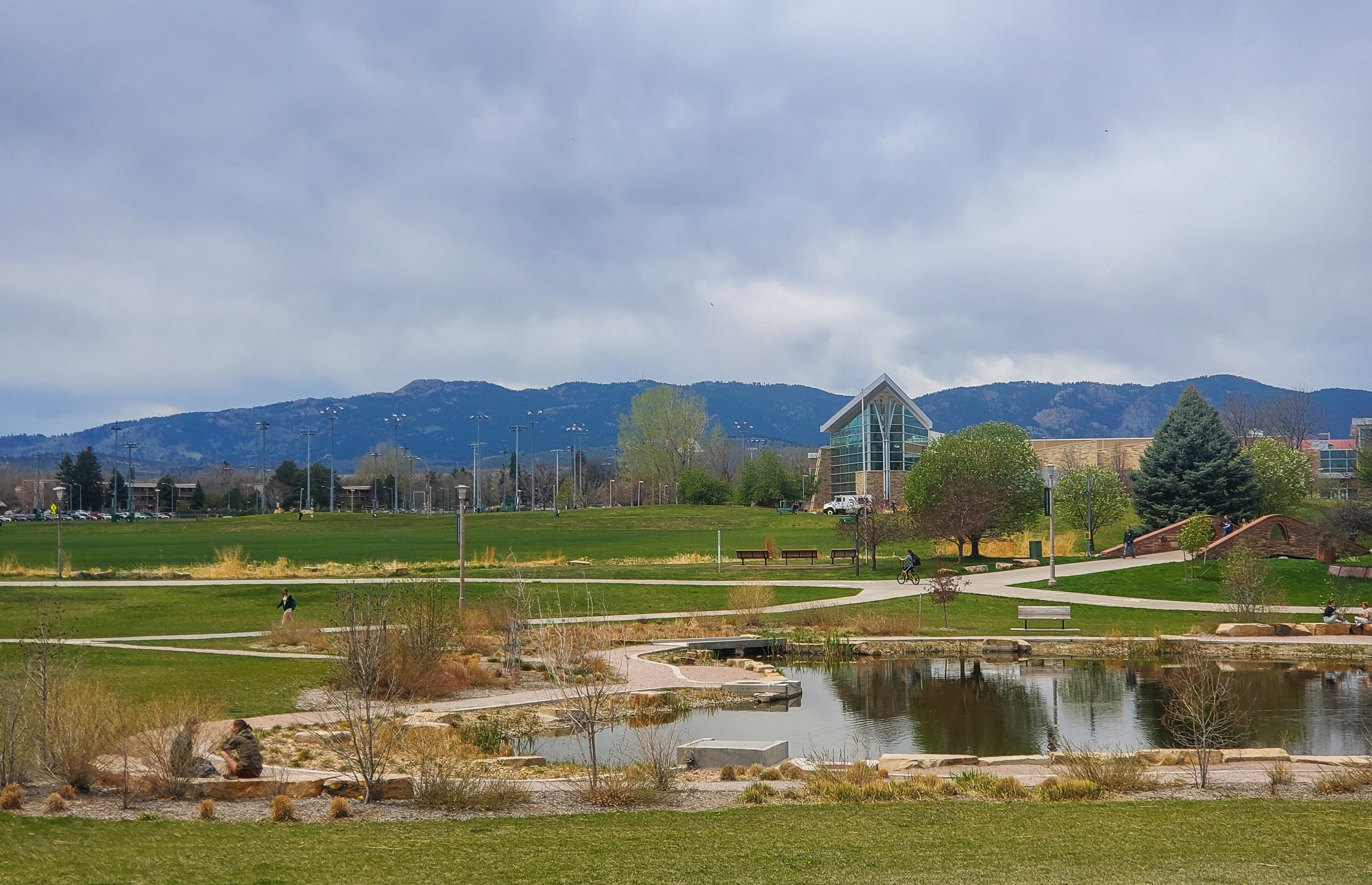Collaborating for a Fire-Adapted Future
From May 2-4, 2023, the Southwest Ecological Restoration Institutes and their partners hosted the Cross-Boundary Landscape Restoration Workshop at Colorado State University in Fort Collins, Colorado. The workshop brought together stakeholders in wildfire and land management from the southwestern region to facilitate meaningful discussions and exchange successes and lessons learned regarding cross-boundary, collaborative efforts to restore and reimagine fire-adapted forest landscapes.
Additionally, the workshop aimed to explore ways to better integrate diversity and inclusion into forestry, fuels, and fire research and management, and to co-create recommendations, strategies and resources for collaborative landscape-scale restoration projects.
Throughout the workshop, the idea of cross-boundary landscape restoration was discussed from many different perspectives. On the second day of the event, Tom Torres, Arizona state forester; Matt McCombs, Colorado state forester; and Laura McCarthy, New Mexico state forester, delivered a powerful presentation on the integration of cross-boundary planning and implementations into fire-adapted systems. They emphasized the significance of partnerships in achieving their mission and accomplishing vital work. Collaborating across boundaries allows partners to leverage diverse knowledge, perspectives, resources, funding and staffing, which are all critical for impactful work on a larger scale.

In addition, they emphasized that "cross-boundary" refers not only to physical boundaries but also to the boundaries between nongovernmental organizations and state and federal agencies. It is crucial for these entities to recognize their limitations and seek out partnerships that can help bridge these boundaries. By breaking down these barriers, more comprehensive and effective strategies for wildfire prevention and management can be developed.
To achieve successful cross-boundary landscape restoration, it is crucial to recognize the importance of inclusivity and diversity in partnerships. Workshop participants identified several groups that may be underrepresented or missing from these collaborations, including private landowners, tribal nations, underserved communities, storytellers and corporations. Each of these groups brings unique perspectives, knowledge and resources, and by collaborating with them, it is possible to create more effective strategies for wildfire prevention and management.
Community-based fire management is an excellent illustration of a collaborative approach to wildfire prevention and management that addresses the need for inclusivity and diversity in partnerships. Through this approach, local communities can be involved in fire management efforts, helping them understand the relationship between fire and nature, while recognizing fire as a crucial ecological process, similar to the wind and rain. By incorporating storytellers in these efforts, the gap between wildfire professionals and the public can be bridged, helping to communicate the complicated science and land management practices that connect people with the crucial work being done, and how it affects them.
Throughout the week, the significance of collaboration in land management for catastrophic wildfire prevention left a lasting impression. This idea is being embraced by many nongovernmental organizations and government agencies as we work together to tackle the wildfire crisis. No single group can do it alone, and events like the Cross-Boundary Landscape Restoration Workshop provide incredible opportunities for individuals from diverse organizations and backgrounds to connect and work toward a common goal.
The National Wild Turkey Federation is committed to fostering lasting partnerships with state and federal agencies, nongovernmental organizations, corporations and private donors to grow its mission of conserving the wild turkey by enhancing forests and watersheds and preserving our nation’s hunting traditions. Current collaborative projects include:
Learn more about the NWTF’s partnerships here.
